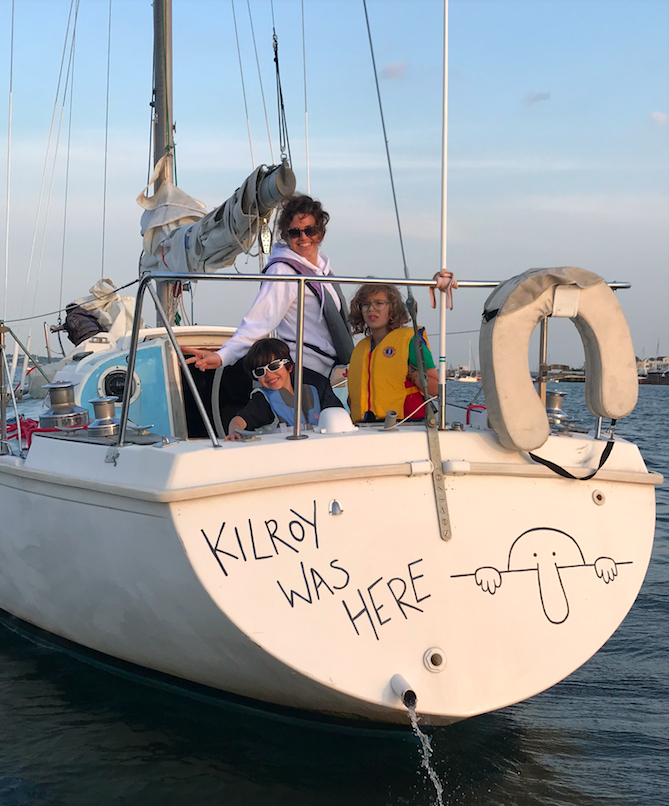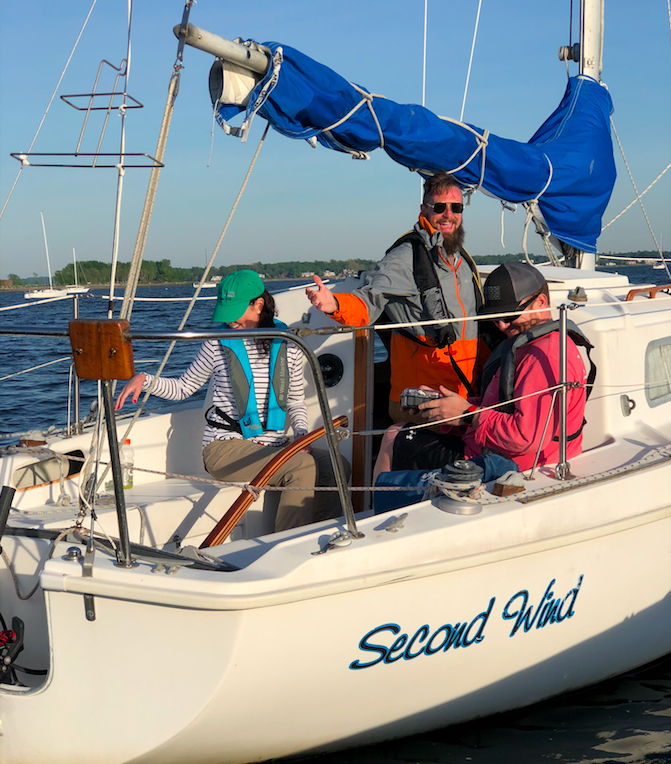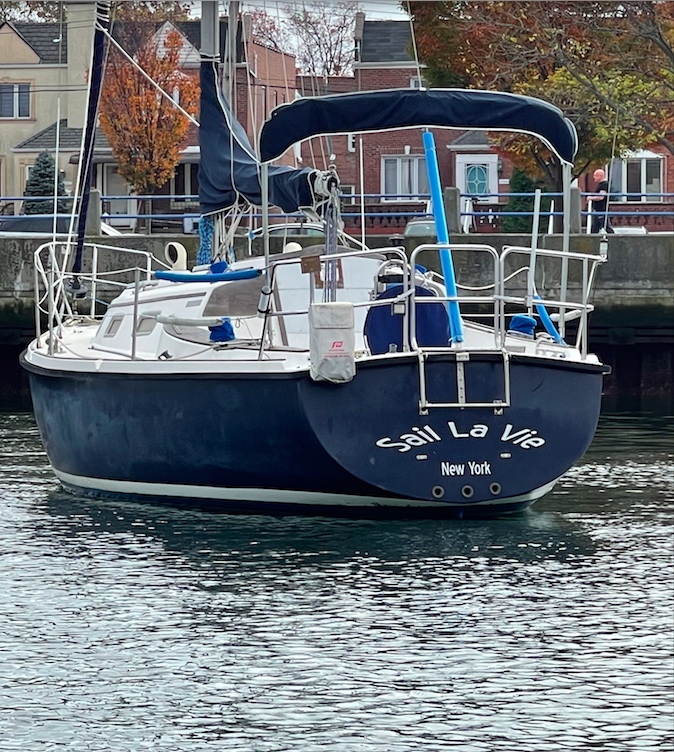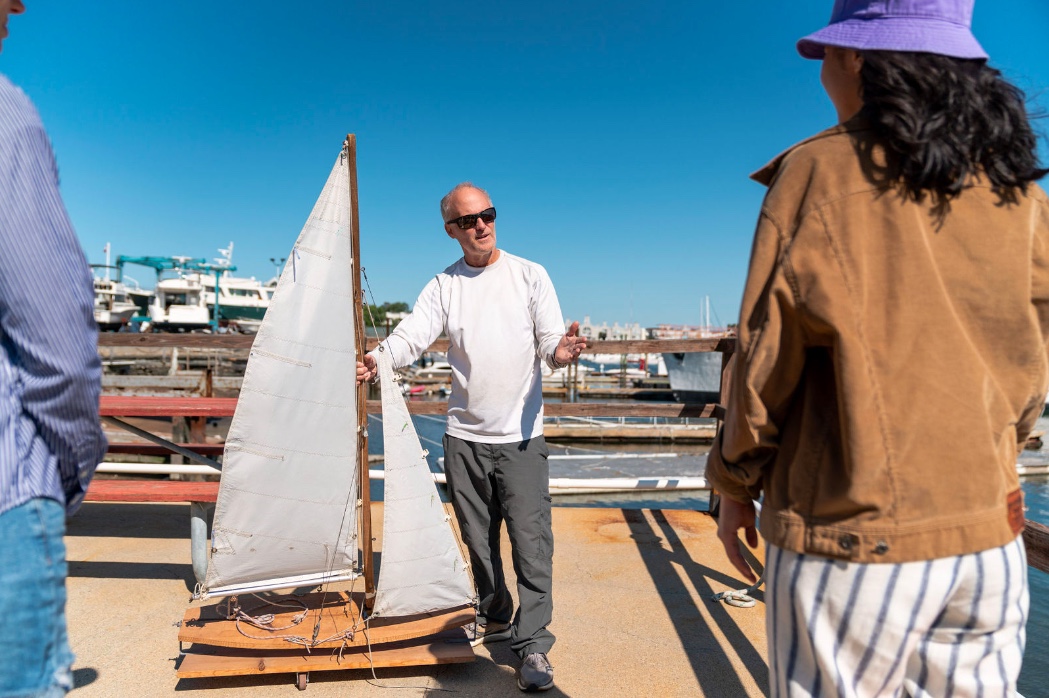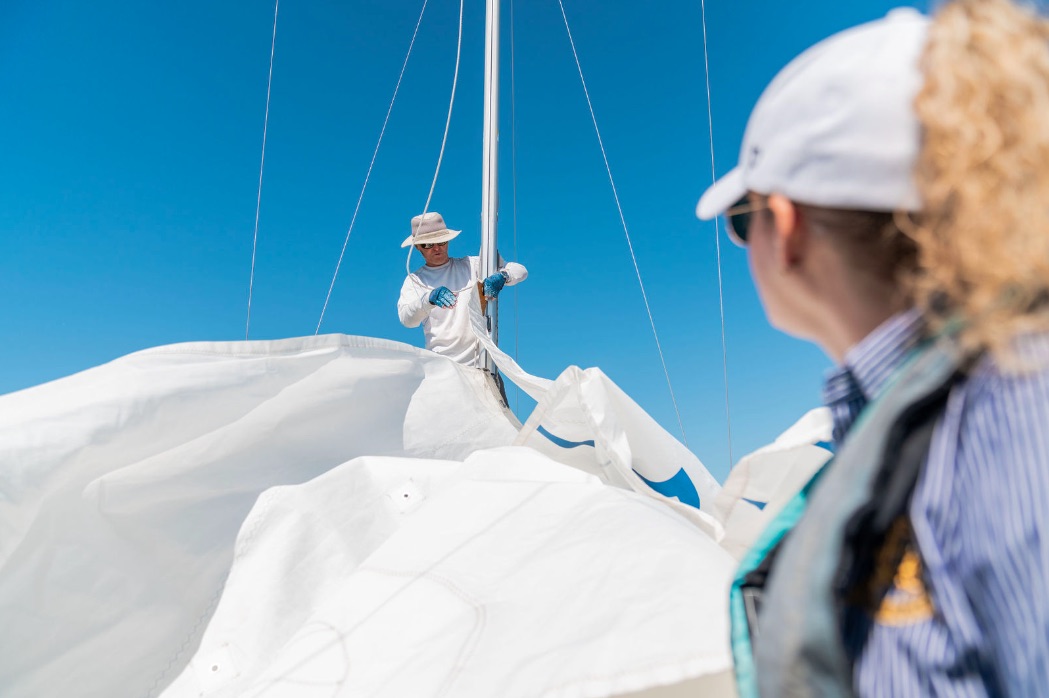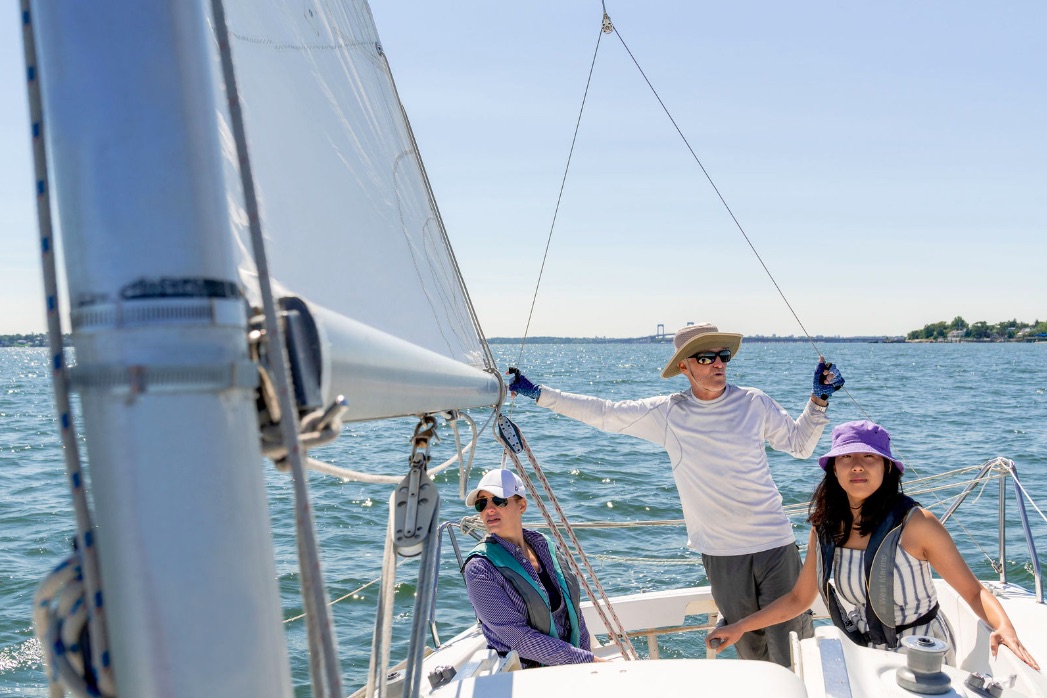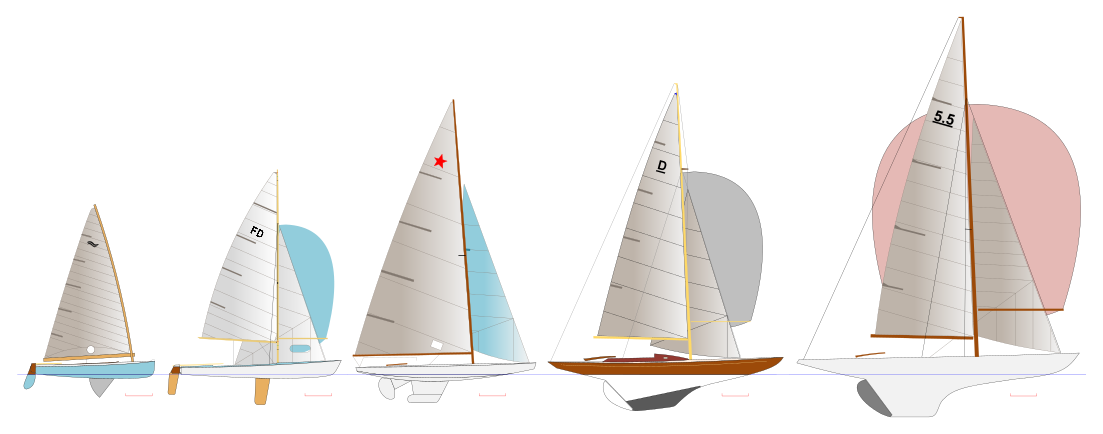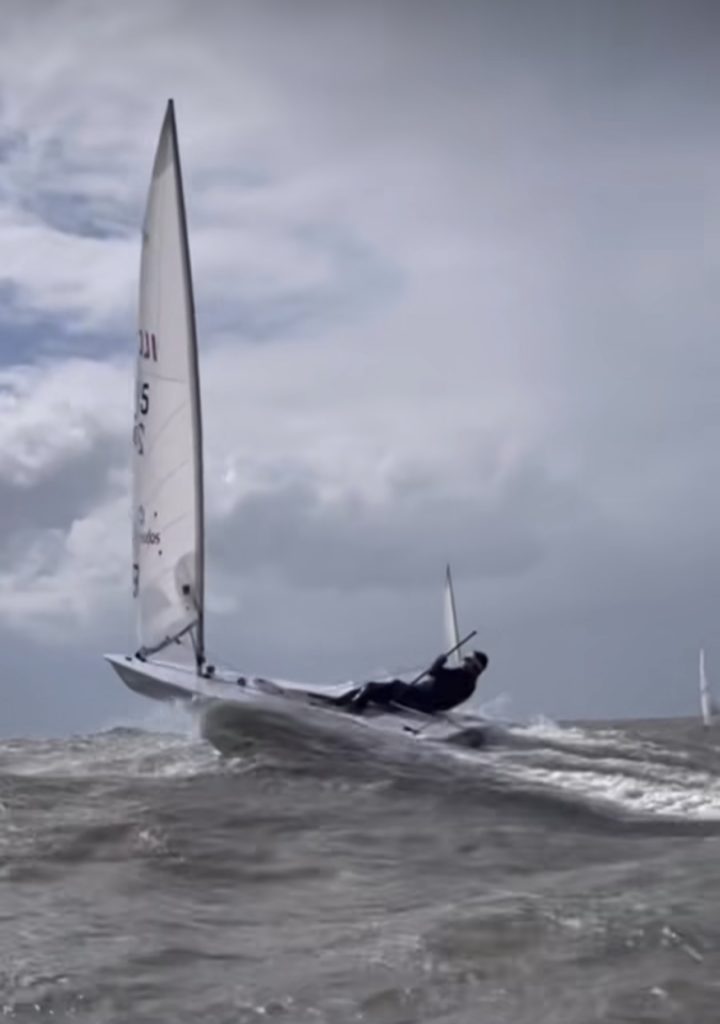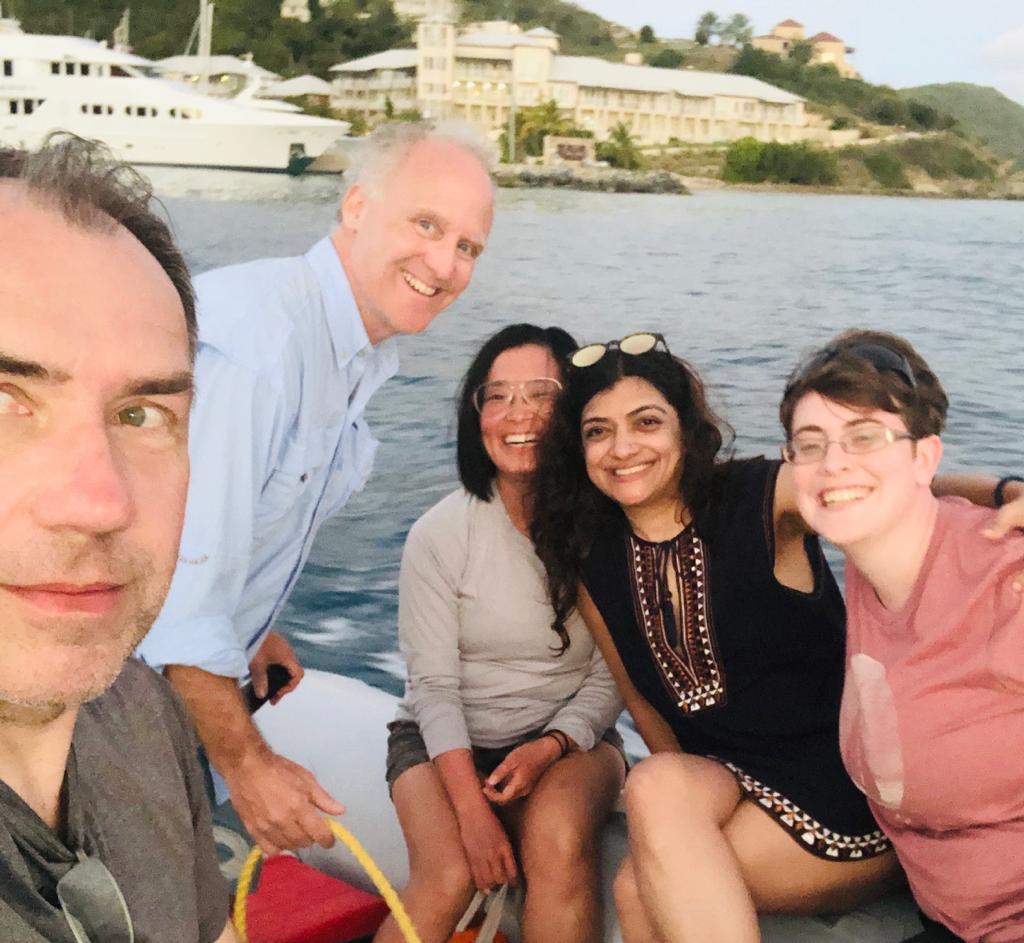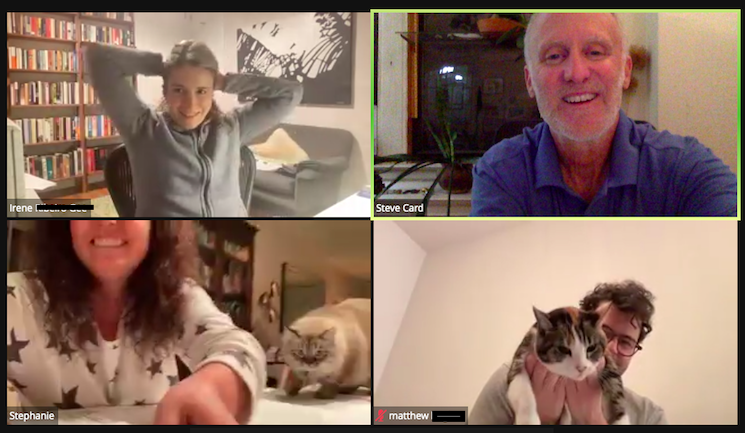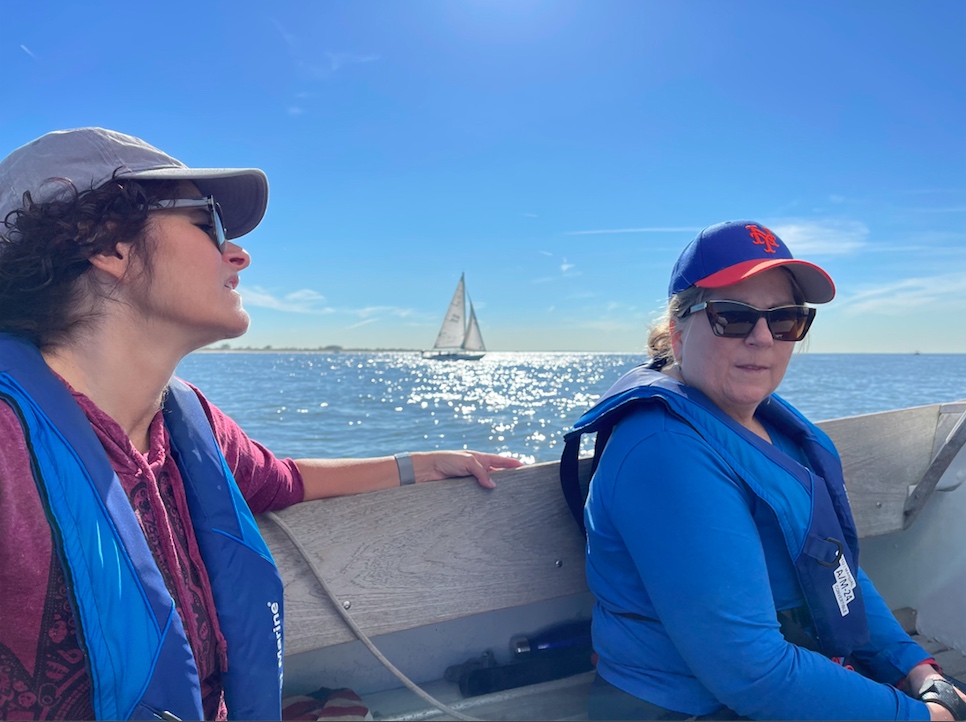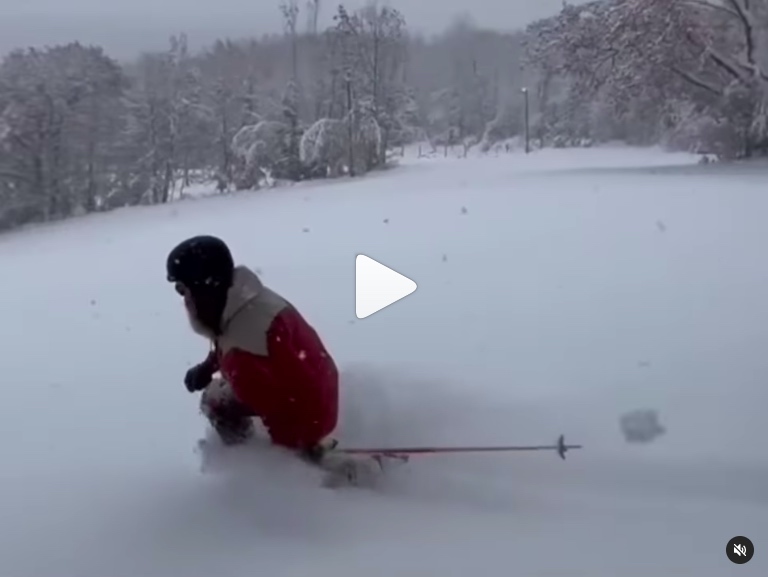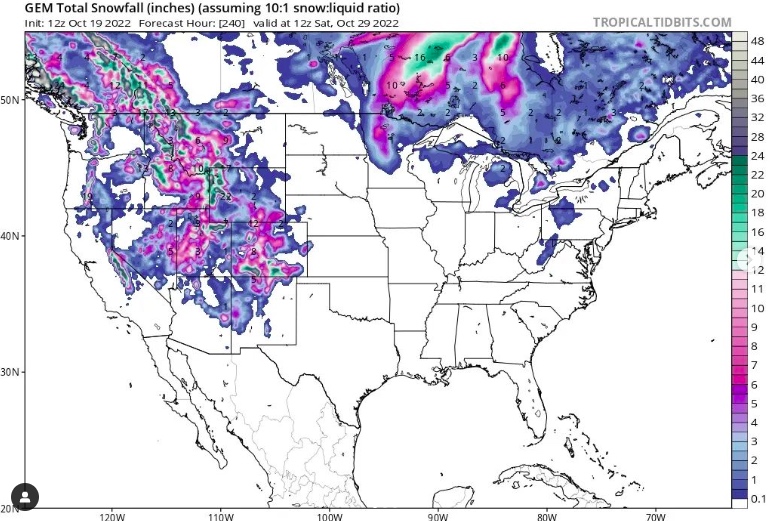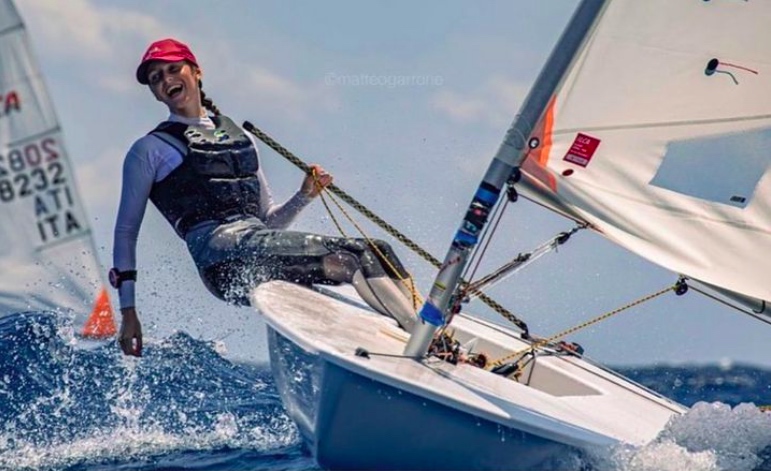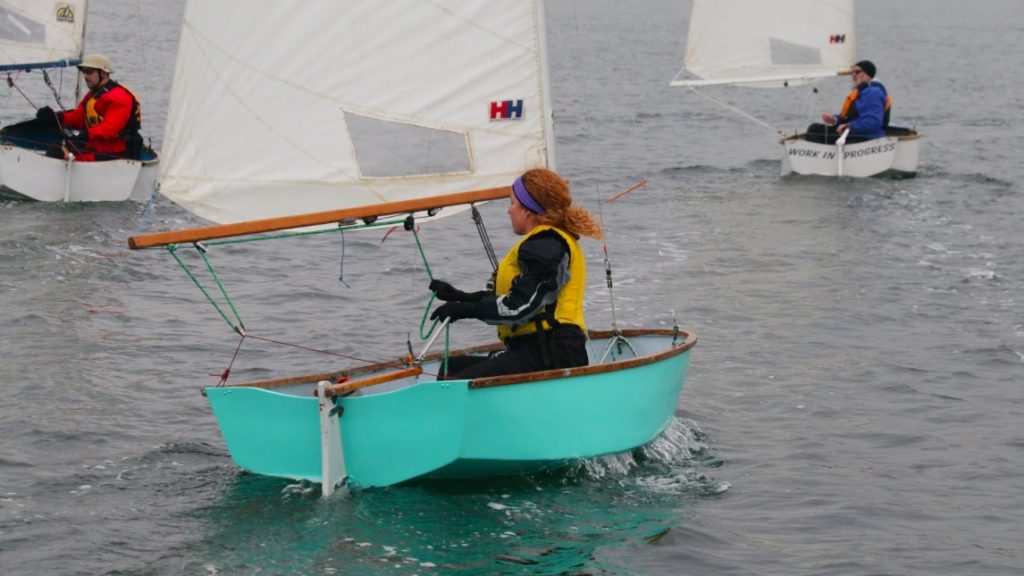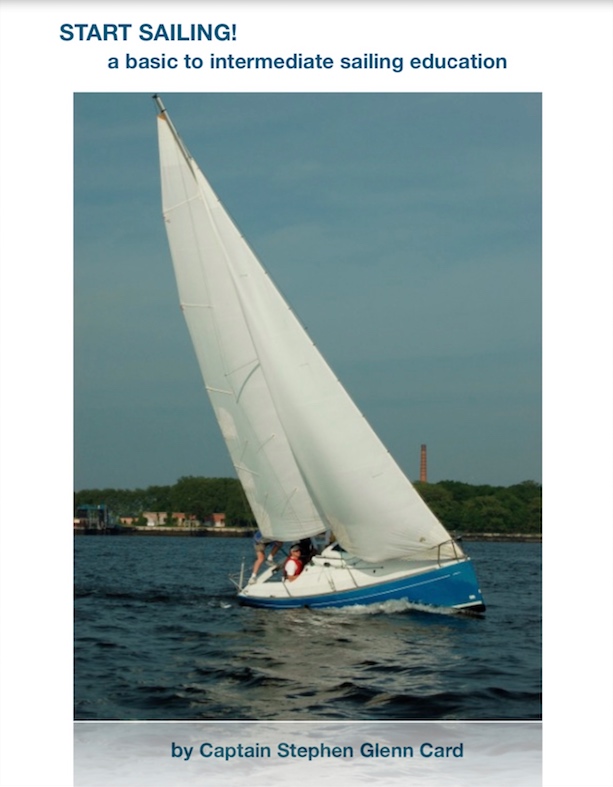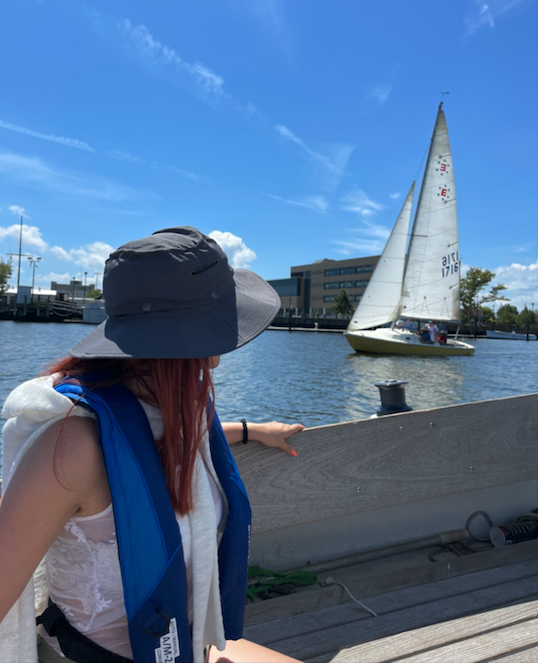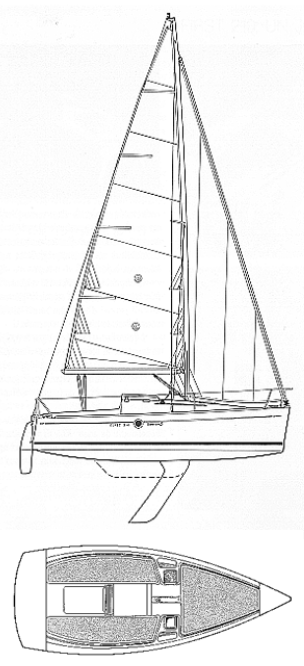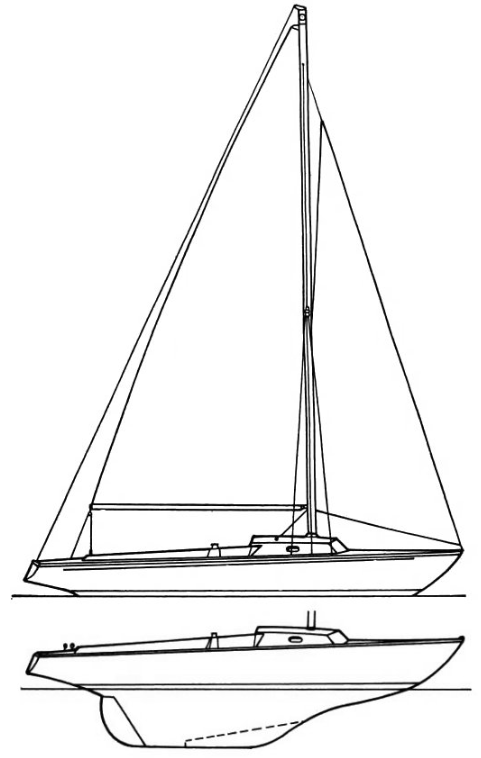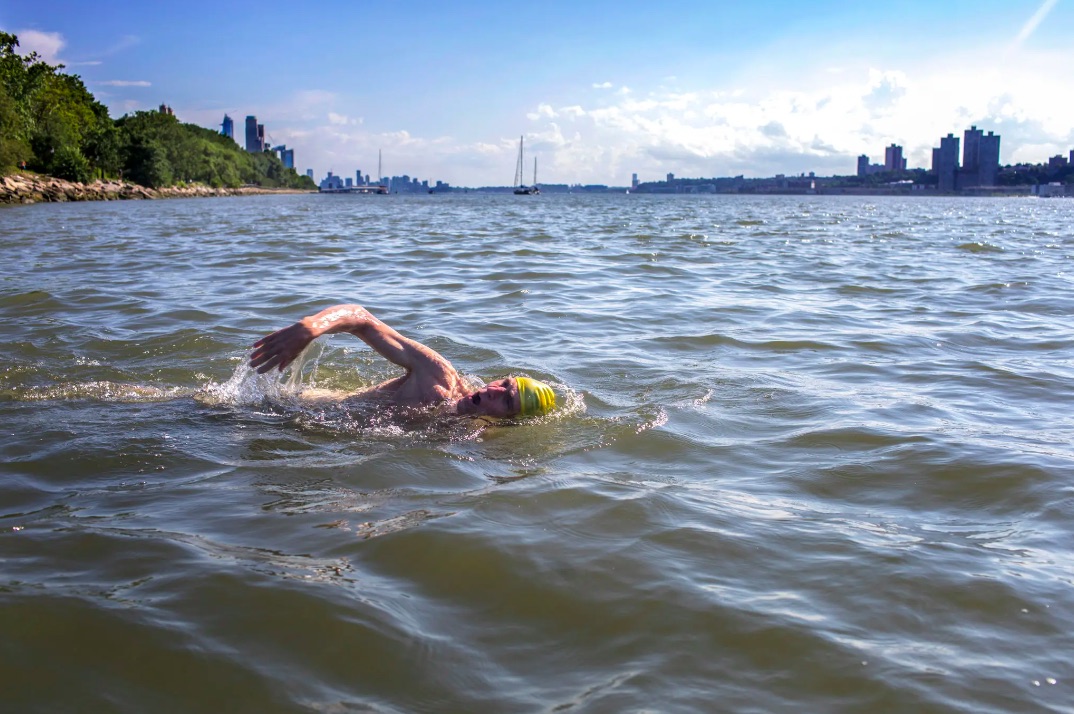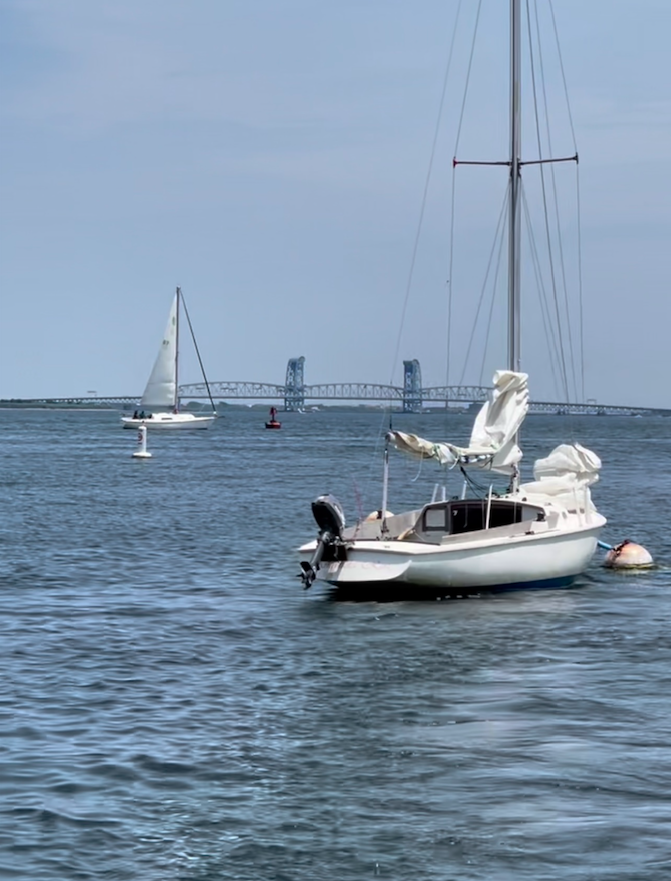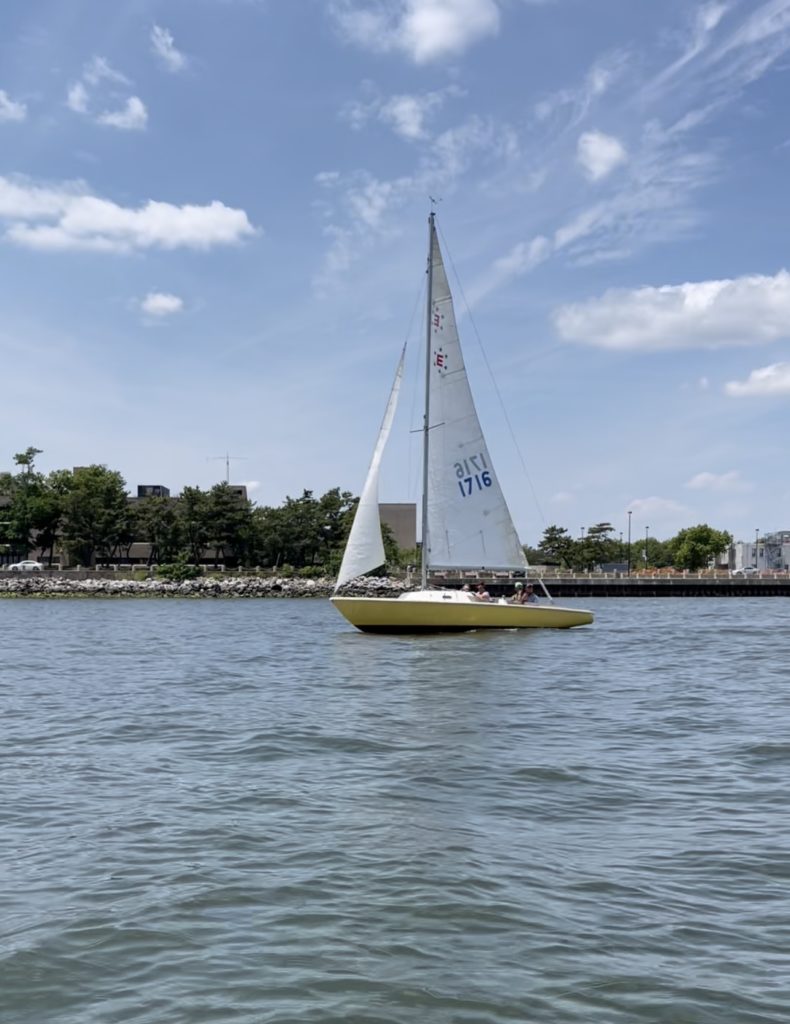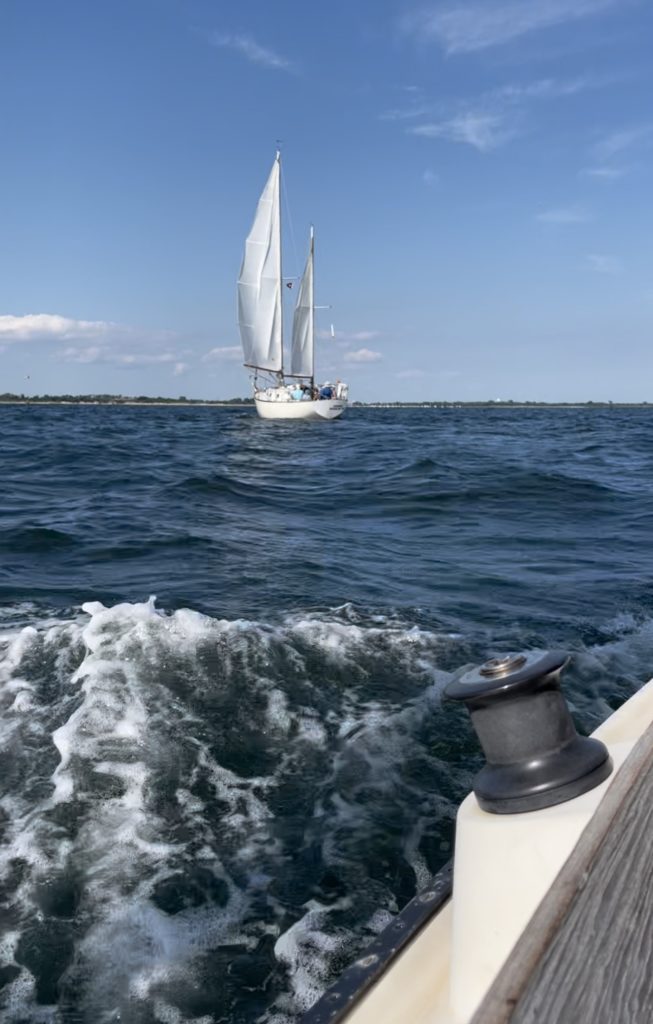No, not the yacht ensign flag – the little yacht called an Ensign, on which we teach people how to sail a boat properly in Brooklyn, NYC.
ASA recently rolled out an on-line study course for learning to sail. It’s intended to help people get ready for on-water lessons by previewing the concepts and terminology. Schools pay a monthly fee to have access for their students; students pay whatever, if anything, schools charge them. Or, anyone can just purchase and peruse (see link at bottom of post).
Maybe it cuts down classroom time and reduces hours/costs for schools. Maybe it lets those whose learning preference is to read up and study in advance do so. Maybe it competes with other online educational materials such as ASA’s arch rival, NauticEd. Any which way you slice it, it’s here.
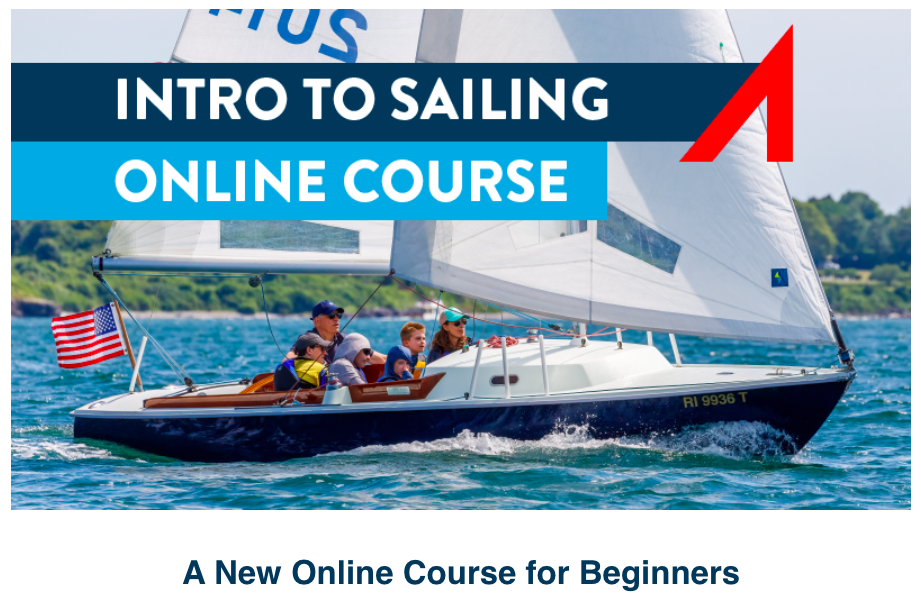
And, when they did their e-blasts about it, they chose a photo of an Ensign. Why do we care? Because that’s what we teach on for learn to sail (ASA 101)! We didn’t in the past – it’s a new thing for us, although some schools have been using them for a long time. We tried them last season at our Sheepshead Bay, Brooklyn branch and decided they were at least as good, and maybe slightly better, than what we’d been using since 1997 – the Beneteau First 21.0.
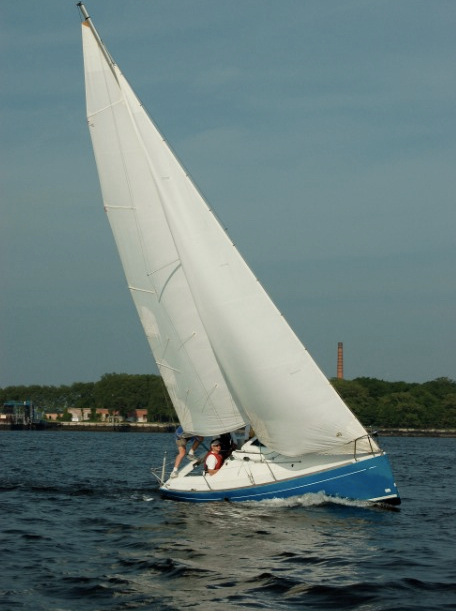
What’s odd is that ASA used an Ensign in this promo campaign. They actually endorse the Beneteau First 21.0. They have no relationship with the Ensign beyond the photo you see above. Sure, it’s a great shot, and ASA undoubtedly is aware of the history and pedigree of the design. But, they really got a hard on for the Beneteau when they did a collab with them- the world’s oldest and largest sailboat manufacturer. ASA thought the industry needed a new, sexier boat, and the “ASA First Trainer” as it was first named was born.
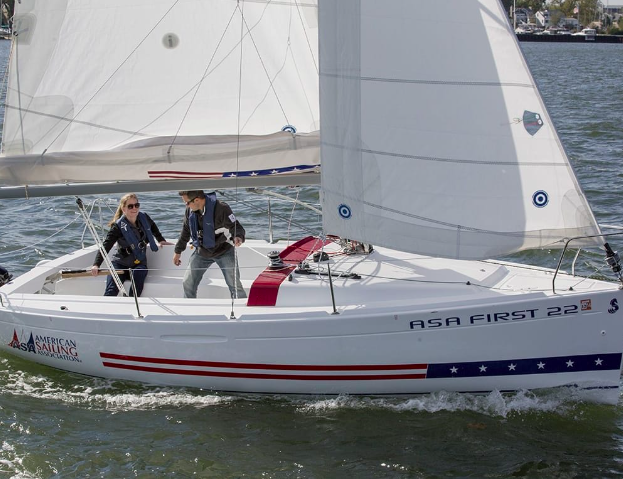
Beneteau took their First 20 (same damn boat as 21) and made a version with a longer cockpit and smaller cabin. That’s it. Same hull; same rig; same keel and rudders. True, the longer cockpit was an advantage for daysailing and teaching, but only because most sailing schools put 4 students into a boat for learn to sail. 4 plus an instructor = one too many people on average to get around when doing maneuvers. ASA has featured the First Trainer (now “22” and same damn length) in other promo stuff so it’s funny that they show an Ensign here.
But, they do!
So, why the Ensign?
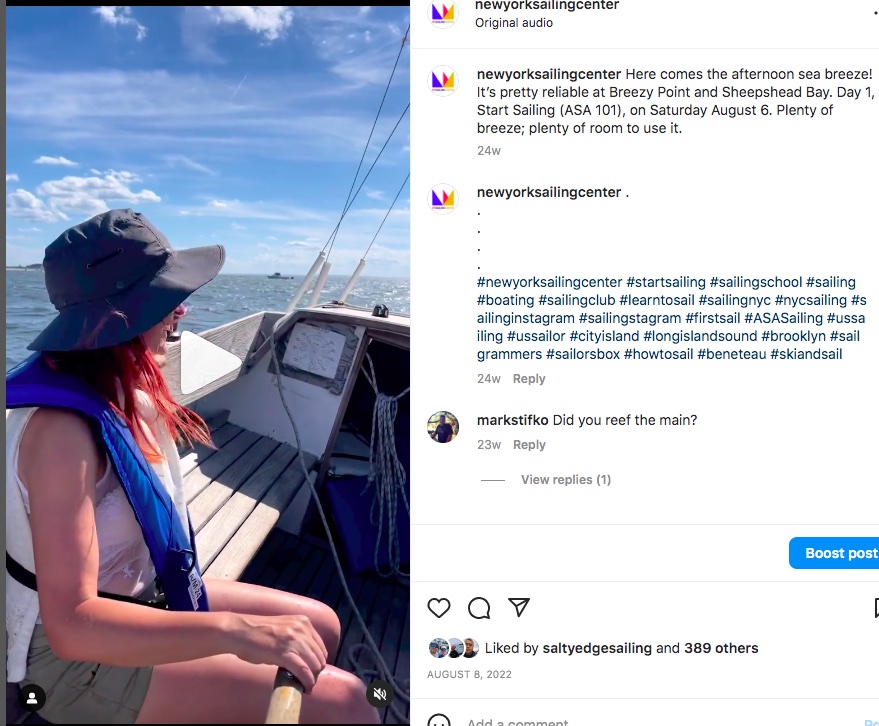
Well, when we started doing a ‘sea trial’ of a satellite branch in Sheepshead Bay, we felt it was a good idea to use what was already down there to get started. Both the Miramar Yacht Club, and the boats they had (Ensigns), had reputations that preceded them. Very good ones. We were only going to try a narrow scope: teach learn to sail a few times and see how it all went. I was quite confident it would work well, based on the boat, the location, the facilities, and the weather. All of it met or exceeded my expectations. As this is about the boat, I’ll focus on the Ensign here:
STABLE. It has a full keel, meaning it’s large and heavy. (The ‘keel’ is the fin underneath the boat that stops it from flipping over and also helps it track straight and pivot evenly during turns.)
MANEUVERABLE. Surprisingly so for a full-keel design, with arguably an inefficient rudder design. In a crowded mooring field (Sheepshead Bay owns that description), the Ensign can maneuver handily through it all, which means it can handle anything.
FAST. Surprisingly fast in light winds with its large genoa jib, and with mass that keeps it moving through lulls to the next puff. When the wind picks up, switch to a basic working jib and eventually reef (shorten) the main. The Ensign can handle more wind than most people who sail them can – and it hauls ASS!
ROOMY. Super long bench seats with high backrests allow the boat to swallow up passengers, so 3 students plus and instructor can get around each other easily. (No, not 4; remember, “we give you more!”).
SAFE. Despite not having lifelines, which we were a little concerned about beforehand, the boat is super safe. As it’s very stable, it simply doesn’t heel as far over, nor as quickly. That, plus high backed benches, mean people aren’t at significant risk of falling overboard.* No need to leave the cockpit and go forward except to pick up the mooring – when we’re back inside super protected Sheepshead Bay, and the boat is level as it makes its approach. (*Lifelines can help in that regard, but people can still fall overboard despite them.)
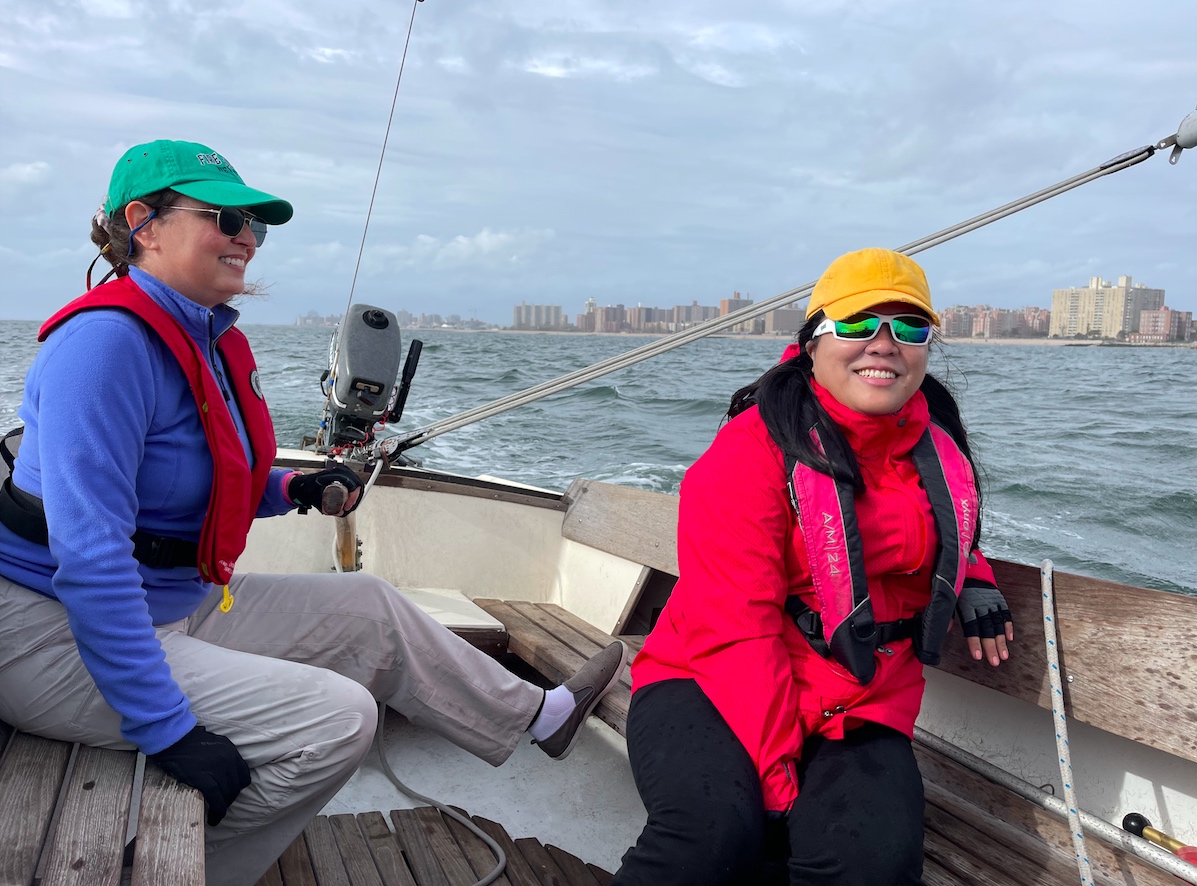
I used to personally have a penchant for light, racy boat designs. Over time, I developed more of an appreciation than I’d had for some classic, more traditional boat designs. And now, we teach people how to sail on one.
And, for anyone interested in doing a little on-line learning before they come to us to do it for real on an actual boat, here’s the link to ASA’s online prep course!..
